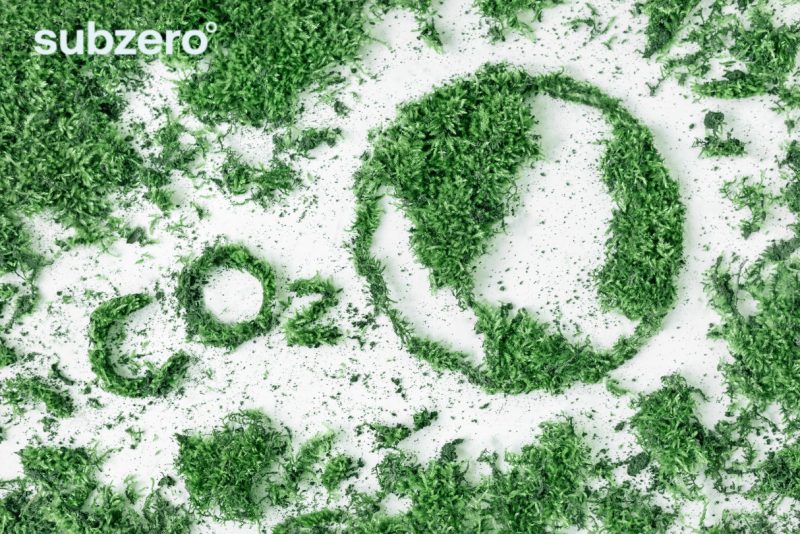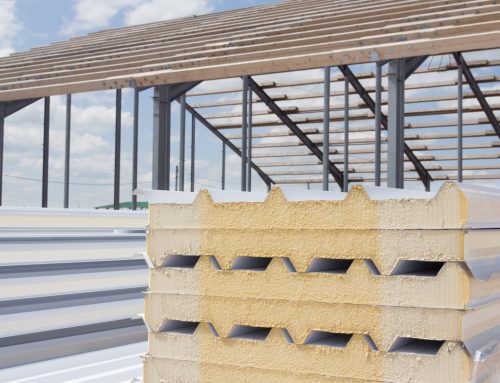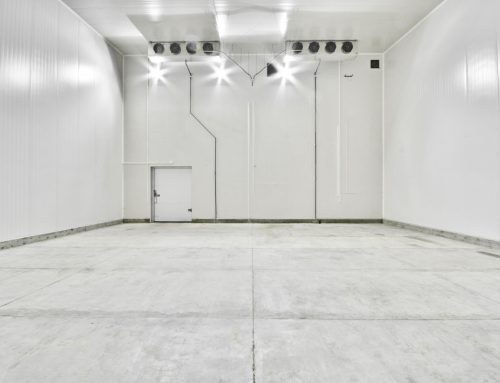Lubov Polovova, founder and CEO of Subzero, shares the experience, technology and benefits of using CO2 in the agricultural sector and debunks the misconceptions about its use.
According to the Montreal Protocol and its Kigali Amendment, refrigerants with high ozone-depleting activity will be minimized worldwide due to their harmful effects on the environment. Businesses are looking for environmentally friendly alternatives. However, there is no universal solution.
Transcritical or subcritical CO2 cooling systems are common in Europe, Asia and the United States at many enterprises of the food industry, cooling warehouses, and commercial enterprises. CO2 cooling is a decent alternative to CFC, HCFC and ammonia systems.
— Lubov, please tell us about the principle of operation of the CO2 cooling system.
Let’s take a look at the schematic diagram of a classic CO2 booster with one compression stage.
The compressor injects hot steam into the recuperative heat exchanger, then the gas moves to the gas cooler, then to the throttle valve that maintains the optimal pressure and temperature in the gas cooler. After the valve, the pressure and temperature drop, and carbon dioxide condenses in the receiver. From the receiver, liquid carbon dioxide is fed to the evaporators. Carbon dioxide vapor is pumped out by the compressor, and the cycle is repeated.
The line from the receiver to the suction line of the compressor looks unusual, but everything is quite logical: flash gas accumulates in the receiver, which significantly increases the pressure. To prevent its excessive growth, the compressor pumps out excess CO2 vapor.

— What are the main technological and economic advantages of CO2 over other systems?
- The CO2 refrigeration system can provide the company not only with cold, but also with hot water supply with water temperature up to 80°С.
Significant reduction of system pipe diameters.
- Reduction of electricity consumption in comparison with classical systems in similar conditions (depends on working conditions and system concept).
- It is convenient to combine system contours with different evaporating points.
Low noise level during compressor operation.
- Carbon dioxide is an explosion-proof, non-flammable and relatively non-toxic substance.
Low price for carbon dioxide.
— How can this technology be applied in the agricultural sector?
Enterprises for processing and storage of agricultural products (vegetables, fruits, berries) must follow a certain technological process (reception, pre-cooling, freezing, sorting, storage). All these processes must take place at different temperatures and, accordingly, at different boiling points of the refrigerant.
What are the options for solving this task? The most obvious is to use a separate unit for each temperature regime. Although this is a simple and reliable solution, this way significantly increases the investment in equipment. A CO2 booster allows you to combine circuits with different evaporating points in one system.
— What are the specificities in the maintenance of the system and equipment for CO2? What additional knowledge and skills should a specialist working with such equipment have?
In principle, the maintenance of the system on carbon dioxide does not differ from the maintenance of the system on CFC refrigerants. Differences are in details, and they are caused by physicochemical properties of CO2. For example:
- to control the operation of the system on carbon dioxide, a suitable manometric station is required, designed for much higher pressures and with protective hose fastenings;
there is a risk of dry ice formation during depressurization of the system (emergency or planned for service work) or during refueling. It is impossible to carry out further work and start the system until it is completely evaporated;
- after each depressurization of the system element in which there is a sealing gasket, it must be replaced with a new one, as it becomes unsuitable for reuse;
- contact of carbon dioxide with the human body can cause thermal burns. In addition, the high concentration of carbon dioxide in the air significantly worsens the human condition, so it is important to monitor this indicator.
In general, a technician who controls the operation or maintains a carbon dioxide system must be qualified, know the rules, and follow them. In addition, the engineers of our company conduct preliminary training and instruction with the technical specialists of the customer’s company. We also provide equipment service.
— What are the main arguments to abandon freon in favor of CO2?
Among all refrigerants, carbon dioxide is the most promising in the following parameters:
high safety indicators;
minimal negative impact on the environment;
high thermophysical indicators;
operational savings;
economic viability;
availability and accessibility.
Given the need to phase out refrigerants that adversely affect the environment by 2030, CO2 systems have long-term viability under these conditions.
By the way, according to Danfoss statistics, the average annual leakage of refrigerant into the atmosphere is about 15% of the mass of the system refueling. Given that for CO2 GWP = 1, while for R507, for example, GWP = 3900, the carbon footprint and direct environmental impact of CO2 systems is several orders of magnitude less than that of CFC systems.
— Speaking of the financial side of the use of CO2 cooling systems, what are the savings during its implementation and operation?
When choosing the optimal solutions in the project, the difference in operating costs can be up to 15% in favor of the system on carbon dioxide. Meanwhile, choosing the concept of a system that works inefficiently in specific conditions can lead to significant overpayments for the purchase of equipment, electricity costs, service, and ultimately the carbon dioxide system may become not a solution but a problem for the customer.
It is important to take a comprehensive approach to the design of any system, take into account the maximum number of factors and choose the optimal solution that will be suitable for specific technical tasks.
— In what conditions the use of such a system is justified, and in what conditions — no?
As of 2021, it is economically feasible in Ukraine to use CO2 systems with a cooling capacity of at least 75 kW.
It is also necessary to choose the concept of the system that is the most appropriate for specific conditions. In general, there are no universal criteria that determine the feasibility of a decision. It is necessary to compare the estimated productivity and economic efficiency, and make the appropriate decision.
— What are the most common consumer concerns about the use of CO2 systems?
I would rather call them "myths" or mistakes that are easily debunked if you understand the technology and the specifics of the work, technological processes:
Myth №1: CO2 is too dangerous
Under the wrong conditions of use, all refrigerants can cause damage. Some of the characteristics that raise concerns about CO2 coincide with its benefits. High operating pressure is scary, but it is a feature that reduces equipment costs and increases energy efficiency. Properly designed, installed and commissioned, the CO2 system is just as safe as any other.
Myth 2: the use of CO2 requires detecting leaks, which is not necessary for other refrigerants.
Like many refrigerants, CO2 is a colorless and odorless gas. Accordingly, it is necessary to detect leaks in the engine room and in refrigerators.
However, leak detectors are always needed, regardless of the refrigerant. CO2 is widely used in industrial plants with ventilation and leak detection in places of use.
It is important to note that CO2 requires the right technology to detect leaks due to its presence in the human body. Tools that only measure oxygen levels are not suitable.
Myth № 3: installation and operation of a CO2 system are more expensive.
In most cases, CO2 cascade systems are cheaper to install and operate than two-stage ammonia systems for low-temperature applications.
The unique physical properties of CO2 are also beneficial when used as a secondary refrigerant for high-temperature applications. The high vapor density and volatility in combination need much lower requirements for pumps (for circuits with pump circulation) and pipe diameters compared to systems running on other refrigerants, which reduces capital and operating costs.
When investing in a new cooling system, owners and operators should consider using cascade systems with CO2 or pump-
circulation systems. Whether you want to minimize ammonia,
reduce the carbon footprint or both, CO2 is often a viable and
economical option that provides:
Economical installation and operation
Increased energy efficiency compared to glycol
Reducing the cost of refueling the refrigerant
Refrigerant with zero ozone depletion potential (ODP) and 1 global
warming potential (GWP).
Relevant articles





